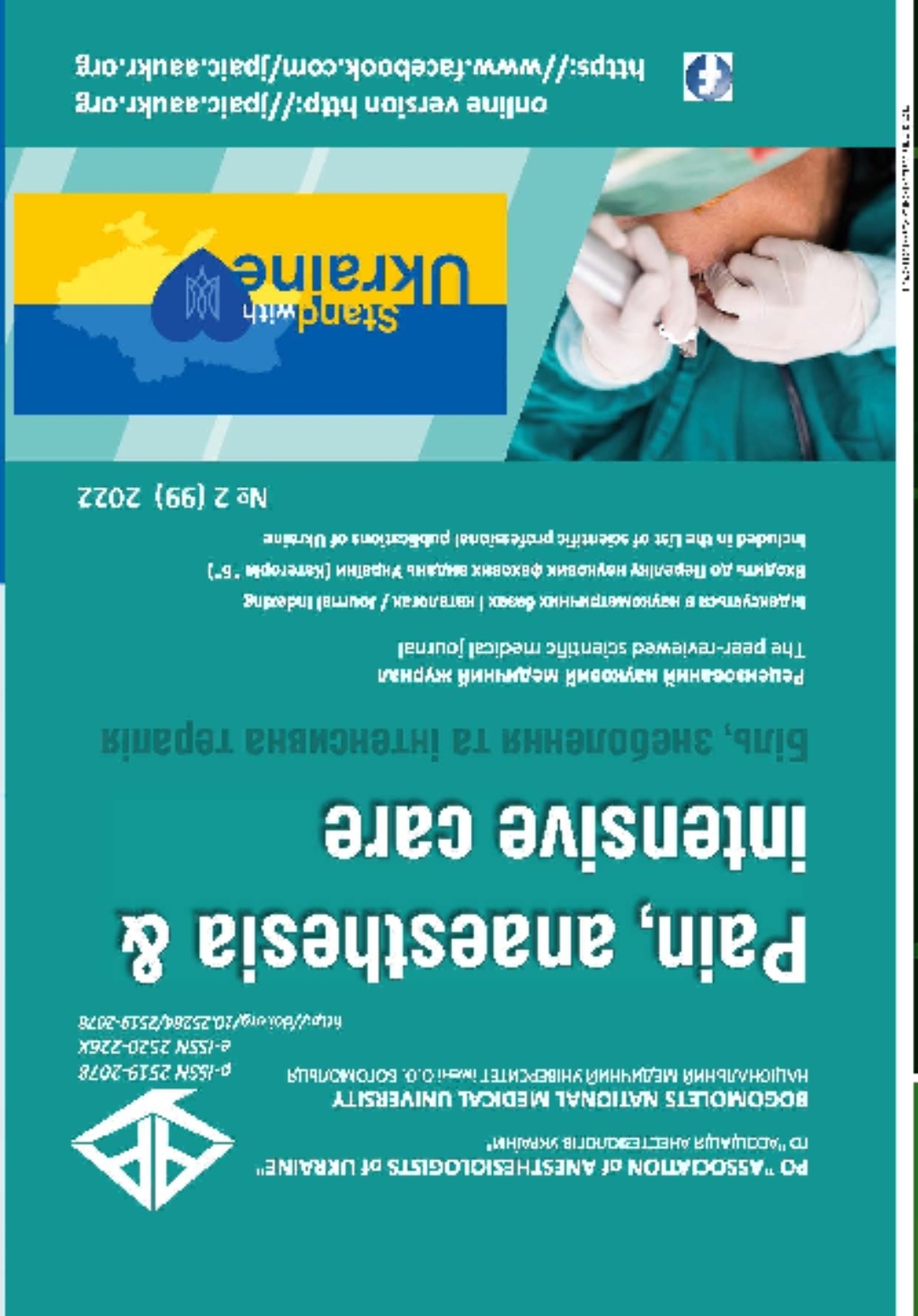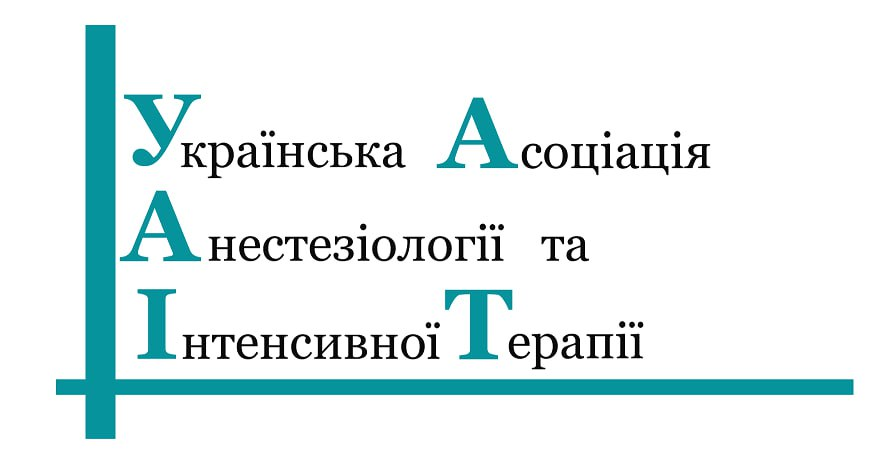РІВЕНЬ ЗАДОВОЛЕНОСТІ ЖІНКИ ПОЛОГАМИ ТА НАРОДЖЕННЯМ ДИТИНИ В ЗАЛЕЖНОСТІ ВІД МЕТОДУ ЗНЕБОЛЕННЯ ВАГІНАЛЬНИХ ПОЛОГІВ
DOI:
https://doi.org/10.25284/2519-2078.2(99).2022.265839Ключові слова:
задоволеність пологами, знеболення пологів, епідуральна, закис азотуАнотація
Вступ. Задоволеність жінки пологами та народженням дитини пов’язана з адекватним знеболенням [1]. Негативний пологовий досвід асоціюється з порушення зв’язку матері та дитини, проблеми з грудним вигодовуванням [2], підвищене бажання до планового кесарського розтину [3]. Ефективне знеболення пологів та позитивний пологовий досвід покращує рівень надання акушерської допомоги [4].
Мета. Визначити різні фармакологічні та нефармакологічні методи знеболення вагінальних пологів та умови, в яких знаходиться породілля, корелюють з рівнем задоволеності жінки пологами та народженням дитини.
Матеріали та методи. Кількість жінок в дослідженні – 321, які пройшли опитувальник «Задоволеності жінки пологами та народженням дитини». Анкета складається з 22 питань, розподілених на 4 розділи: «власна спроможність», «професійна підтримка», «відчуття безпеки», «участь в пологах». Вагітні поділені на 4 групи: з пацієнт-контрольованою епідуральною аналгезією (ПТЕА) (n=217), з сумішшю закису азоту з киснем (50:50) (n=18), з альтернативними методами знеболення вагінальних пологів в домашніх умовах (n=46) та вагінальні пологи в стандартних умовах без фармакологічного знеболення (n=40). Використано метод побудови моделей логістичної регресії.
Результати і обговорення. Дослідження показує, що ризик незадовільної оцінки опитувальника пологового досвіду за розділом «відчуття безпеки» (p=0,034, ВШ=2,03 (95% ВІ 1,06–3,86) та «професійна підтримка», зростає (p=0,006, (ВШ=2,58 (95% ВІ 1,31–5,07) для пацієнток із сильним больовим синдромом (ВАШ 7 балів), у порівнянні з пацієнтками за ВАШ < 7 балів. ПТКЕ вважається стандартом знеболення пологів та непов’язана з ризиком незадовільної оцінки щодо «відчуття безпеки» та «власної спроможності» (p>0,05). Проте суміш закису азоту з киснем та альтернативні методи знеболення демонструють вищі показники задоволеності жінки пологами та народженням дитини за розділом «участі в пологах» (p=0,029, ВШ=0,48 (95% ВІ 0,25–0,93), «власної спроможності» (р=0,040), низьку «професійну підтримку» (p=0,029, ВШ=1,91 (95% ВІ 1,07–3,41).
Висновки. Ефективна стратегія підвищення задоволеності жінки пологами та народженням дитини – це забезпечення позитивної комунікації з медичним персоналом та інформування жінки щодо переваг та недоліків можливих фармакологічних/нефармакологічних методів знеболення пологів
Посилання
Taheri, M., Takian, A., Taghizadeh, Z. et al. Creating a positive perception of childbirth experience: systematic review and metaanalysis of prenatal and intrapartum interventions. Reprod Health 15, 73 (2018). https://doi.org/10.1186/s12978-018-0511-x

Beck CT, Watson S. Impact of birth trauma on breast-feeding: a tale of two pathways. Nurs Res. 2008;57:228–36.

Nilsson C, Lundgren I, Karlström A, Hildingsson I. Self reported fear of childbirth and its association with women’s birth experience and mode of delivery: A longitudinal population-based study. Women Birth. 2012;25:114–21.

Shorey S, Yang YY, Ang E. The impact of negative childbirth experience on future reproductive decisions: A quantitative systematic review. J Adv Nurs. 2018 Jun;74(6):1236-1244. doi: 10.1111/jan.13534. Epub 2018 Feb 23. PMID: 2939445

survey of women’s experiences of maternity care in England. Statistical release. Published in January in 2020. https://www.cqc.org.uk/sites/default/fi les/20200128_mat19_statisticalrelease.pdf
Thomson G, Feeley C, Moran VH, Downe S, Oladapo OT. Women’s experiences of pharmacological and non-pharmacological pain relief methods for labour and childbirth: a qualitative systematic review. Reprod Health. 2019 May 30;16(1):71. doi: 10.1186/s12978-019-0735-4. PMID: 31146759; PMCID: PMC6543627.

Labor, S., & Maguire, S. (2008). The Pain of Labour. Reviews in pain, 2(2), 15–19. https://doi.org/10.1177/204946370800200205

McKenzie-McHarg K, Ayers S, Ford E, Horsch A, Jomeen J, Sawyer A, Stramrood C, Thomson G, Slade P. Post-traumatic stress disorder following childbirth: an update of current issues and recommendations for future research. J Reprod Infant Psychol. 2015;33:219–37
Fenaroli V, Molgora S, Dodaro S, Svelato A, Gesi L, Molidoro G, Saita E, Ragusa A. The childbirth experience: obstetric and psychological predictors in Italian primiparous women. BMC Pregnancy Childbirth. 2019 Nov 15;19(1):419. doi: 10.1186/s12884-019-2561-7. PMID: 31730468; PMCID: PMC6858642.

Cunningham FG, Leveno KJ, Bloom SL, et al. Williams Obstetrics. 24th ed. New York: McGraw- hill; 2014
An Updated Report by the American Society of Anesthesiologists Task Force on Obstetric Anesthesia and the Society for Obstetric Anesthesia and Perinatology. Anesthesiology 2016; 124:270–300 doi: https://doi.org/10.1097/ALN.0000000000000935

Tan, D.J.A., Sultana, R., Han, N.L.R. et al. Investigating determinants for patient satisfaction in women receiving epidural analgesia for labour pain: a retrospective cohort study. BMC Anesthesiol 18, 50 (2018). https://doi.org/10.1186/s12871-018-0514-8

Attanasio L, Kozhimannil K, Jou J, McPherson M, Camann W. Women’s experiences with neuraxial labor analgesia in the listening to mothers II survey: a content analysis of open-ended responses. Anaesthesia and Analgesia. 2015;121(4):974–80.

Toledo P, Sun J, Grobman WA, Wong CA, Feinglass J, Hasnain-Wynia R. Racial and ethnic disparities in neuraxial labor analgesia. Anesth Analg. 2012;114:172–8.

Crow R, Gage H, Hampson S, Hart J, Kimber A, Storey L: The measurement of satisfaction with healthcare: implications for practice from a systematic review of the literature. Health Technol Assess. 2002, 6: 1-244.

Richardson MG, Lopez BM, Baysinger CL, Shotwell MS, Chestnut DH. Nitrous Oxide During Labor: Maternal Satisfaction Does Not Depend Exclusively on Analgesic Effectiveness. Anesth Analg. 2017 Feb;124(2):548-553. doi: 10.1213/ANE.0000000000001680. PMID: 28002168.

NHS Patient Survey. 2019 Survey of woman’s experience of maternity care Statistical release. Published January 2020. https://www.cqc.org.uk/sites/default/fi les/20200128_mat19_statisticalrelease.pdf
Czech, I., Fuchs, P., Fuchs, A., Lorek, M., Tobolska-Lorek, D., Drosdzol-Cop, A., & Sikora, J. (2018). Pharmacological and NonPharmacological Methods of Labour Pain Relief-Establishment of Effectiveness and Comparison. International journal of environmental research and public health, 15(12), 2792. https://doi.org/10.3390/ijerph15122792

Snowden JM1, Tilden EL, Snyder J, Quigley B, Caughey AB, Cheng YW. Planned Out-of-Hospital Birth and Birth Outcomes N Engl J Med. 2015 Dec 31;373(27):2642-53. doi: 10.1056/NEJMsa1501738.

Dencker A, Taft C, Bergqvist L, Lilja H, Berg M. Childbirth experience questionnaire (CEQ): develop- ment and evaluation of a multidimensional instrument. BMC pregnancy and childbirth [Internet]. 2010; 10(1):81. Available from: http://www.biomedcentral.com/1471-2393/10/81%5Cnhttp://www. biomedcentral.com/content/pdf/1471-2393-10-81.pdf

Nilve’ r H, Begley C, Berg M. Measuring women’s childbirth experiences: A systematic review for identifi - cation and analysis of validated instruments. BMC Pregnancy and Childbirth. 2017; 17(1):1–19. https:// doi.org/10.1186/s12884-016-1183-6

Walker KF, Wilson P, Bugg GJ, Dencker A, Thornton JG. Childbirth experience questionnaire: validating its use in the United Kingdom. BMC pregnancy and childbirth [Internet]. 2015; 15:86. Available from: http://www.pubmedcentral.nih.gov/articlerender.fcgi?artid=4396591&tool=pmcentrez&rendertype= abstract https://doi.org/10.1186/s12884-015-0513-4 PMID: 25884191

Boie S, Lauridsen HH, Glavind J, Smed MK, Uldbjerg N, Bor P (2020) The Childbirth Experience Questionnaire (CEQ)-Validation of its use in a Danish-speaking population of new mothers stimulated with oxytocin during labour. PLoS ONE 15(5): e0233122. https://doi.org/10.1371/journal.pone.0233122

Soriano-Vidal FJ, Oliver-Roig A, Cabrero-Garc ́ıa J, Congost-Maestre N, Dencker A, Richart-Mart ́ınez M. The Spanish version of the Childbirth Experience Questionnaire (CEQ-E): Reliability and validity assessment. BMC Pregnancy and Childbirth [Internet]. 2016; 16(1):1–8. Available from: http://dx.doi. org/10.1186/s12884-016-1100-z

Sawyer, A., Ayers, S., Abbott, J. et al. Measures of satisfaction with care during labour and birth: a comparative review. BMC Pregnancy Childbirth 13, 108 (2013). https://doi.org/10.1186/1471-2393-13-108

Mohamed Elsibai Anter, Said Abdel Attey Saleh, Sara Shawkey Allam & Ahmed Mohamed Nofal (2021)Effi cacy and safety of intravenous paracetamol in management of labour pains in a low resource setting: a randomized clinical trial, The Journal of Maternal-Fetal & Neonatal Medicine, DOI: 10.1080/14767058.2021.1911995

Kanda Y. Investigation of the freely available easy-to-use software ‘EZR’ for medical statistics. Bone Marrow Transplant. 2013;48:452–458.

Anim-Somuah M, Smyth RMD, Howell CJ. Epidural versus non-epidural or no analgesia in labour. Cochrane Database Syst Rev. 2005;4. Art No.: CD000331. https://doi.org/10.1002/14651858.CD000331.pub2.

Haines HM, Rubertsson C, Pallant JF, Hildingsson I. The infl uence of women’s fear, attitudes and beliefs of childbirth on mode and experience of birth. BMC Pregnancy Childbirth. 2012;12(1):1.

Ye HJ, Jiang YJ, Ruan ZF. [Relationship between factors of labour pain and delivery outcomes]. Zhonghua Fu Chan Ke Za Zhi. 2011 Oct;46(10):753-7. Chinese. PMID:22321349.

Whitburn, L.Y., Jones, L.E., Davey, MA. et al. The meaning of labour pain: how the social environment and other contextual factors shape women’s experiences.BMC Pregnancy Childbirth 17, 157 (2017). https://doi.org/10.1186/s12884-017-1343-3

Khalife-Ghaderi F, Amiri-Farahani L, Haghani S, Hasanpoor-Azghady SB. Examining the experience of childbirth and its predictors among women who have recently given birth. Nurs Open. 2020;8(1):63-71. Published 2020 Aug 19. doi:10.1002/nop2.603

Hollander M, van Hastenberg E, van Dillen J, van Pampus M, de Miranda E, Stramrood C. Preventing traumatic childbirth experiences: 2192 women’s perceptions and views. Arch Women’s Ment Health. 2017;20(4):515–23.

Кучин, Ю.Л., Говсєєв, Д.О., Бєлка, К.Ю., & Романенко, А.М. (2021). Знеболення вагінальних пологів у місті Києві (Україна). Pain, Anaesthesia & Intensive care&, (2(95), 39-46. https://doi.org/10.25284/2519-2078.2(95).2021.238306
Thomson G, Feeley C, Moran VH, Downe S, Oladapo OT. Women’s experiences of pharmacological and non-pharmacological pain relief methods for labour and childbirth: a qualitative systematic review. Reprod Health. 2019 May 30;16(1):71. doi: 10.1186/s12978-019-0735-4. PMID: 31146759; PMCID: PMC6543627.

Gommesen D, Nøhr E, Qvist N, Rasch V. Obstetric perineal tears, sexual function and dyspareunia among primiparous women 12 months postpartum: a prospective cohort study. BMJ. 2019;9(12):e032368. doi: 10.1136/bmjopen-2019-032368.

Royal College of Obstetricians and Gynaecologists . The management of third- and fourth-degree perineal tears (Green top 29) London: Royal College of Obstetricians and Gynaecologists; 2015.
Australian Institute of Health and Welfare. Australia’s mothers and babies 2013 – in brief. In: Perinatal Statistics Series no 31. AIHW. 2015. http://www.aihw.gov.au/publication-detail/?id=60129553770. Accessed 30 Oct 2016.
WHO. (2018). WHO recommendations: Intrapartum care for a positive childbirth experience. Transforming care of women and babies for improved health and well-being Executive summary. WHO Recommendations: Intrapartum Care for a Positive Childbirth Experience.
##submission.downloads##
Опубліковано
Як цитувати
Номер
Розділ
Ліцензія

Ця робота ліцензується відповідно до Creative Commons Attribution-NonCommercial 4.0 International License.
Автори, які публікуються у цьому журналі, погоджуються з наступними умовами:
a. Автори залишають за собою право на авторство своєї роботи та передають журналу право першої публікації цієї роботи на умовах ліцензії Creative Commons Attribution-NonCommercial 4.0 International License, котра дозволяє іншим особам вільно розповсюджувати опубліковану роботу з обов'язковим посиланням на авторів оригінальної роботи та першу публікацію роботи у цьому журналі.
b. Автори мають право укладати самостійні додаткові угоди щодо неексклюзивного розповсюдження роботи у тому вигляді, в якому вона була опублікована цим журналом (наприклад, розміщувати роботу в електронному сховищі установи або публікувати у складі монографії), за умови збереження посилання на першу публікацію роботи у цьому журналі.
c. Політика журналу дозволяє і заохочує розміщення авторами в мережі Інтернет (наприклад, у сховищах установ або на особистих веб-сайтах) рукопису роботи, як до подання цього рукопису до редакції, так і під час його редакційного опрацювання, оскільки це сприяє виникненню продуктивної наукової дискусії та позитивно позначається на оперативності та динаміці цитування опублікованої роботи (див. The Effect of Open Access).








